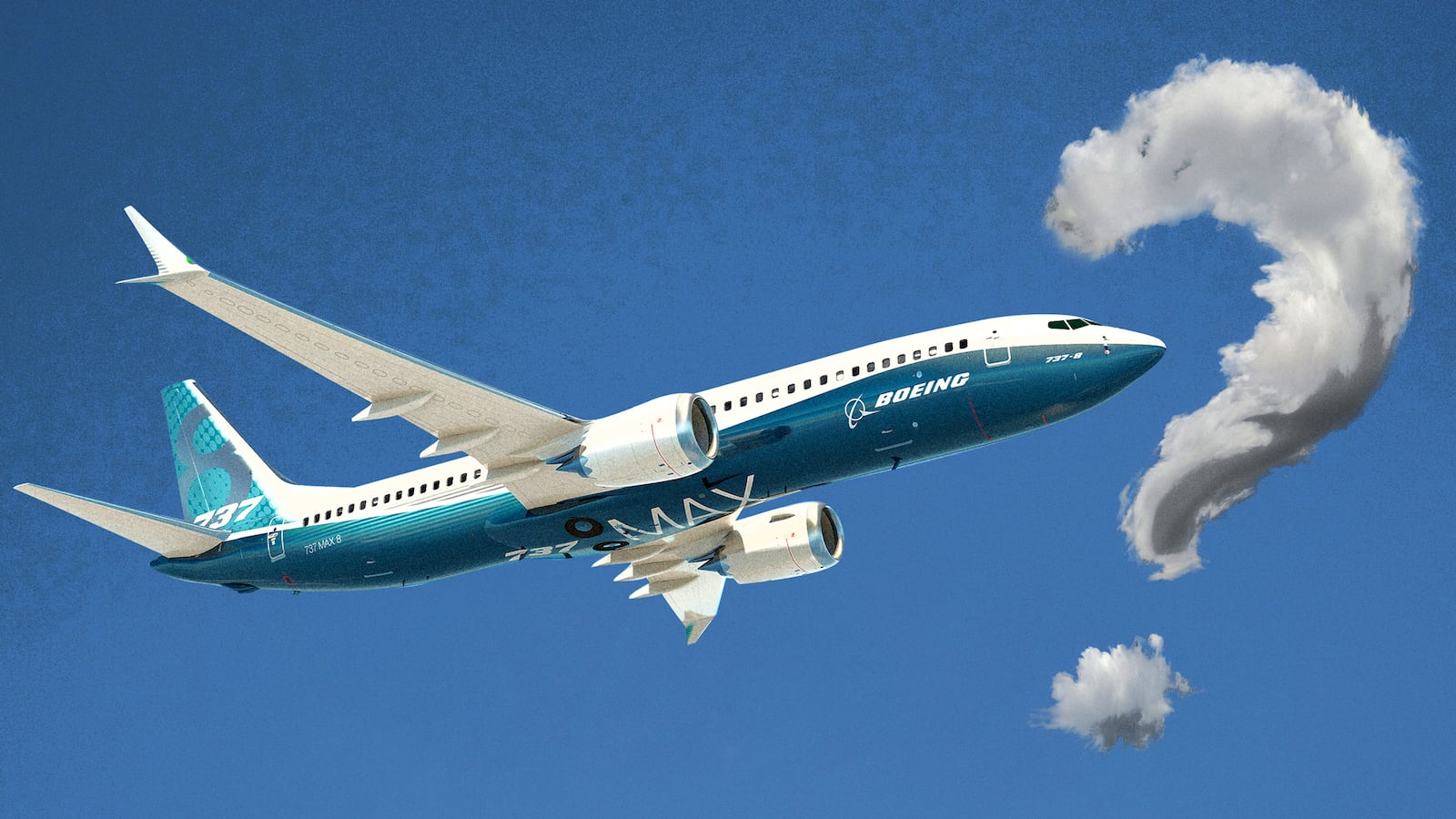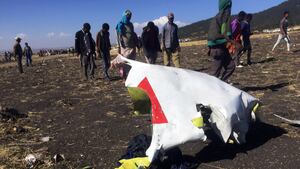Is it safe to board a Boeing 737 MAX-8?
Nobody seems able to come up with a straight answer, particularly in America.
Every day across the rest of the world, airlines and nations are grounding their MAX-8s; the European Union’s civil-aviation authority suspended all MAX models following the same orders from Australia, the U.K., and Singapore.
Understandably, people are spooked by the fact that, in the space of little over four months, 346 people have died in two crashes involving this brand-new model. While investigators have yet to establish the cause of the second crash in Ethiopia, there are strong similarities in the circumstances of that disaster and the previous crash in Indonesia in late October.
Thousands of people are calling airlines to check whether their booked flight involves the MAX-8. The two largest users of the jet in the U.S., Southwest and American Airlines, are trying to assure passengers they consider the airplane safe—Southwest is waiving change fees if passengers want to switch to a different airplane.
But don’t expect either Boeing or the Federal Aviation Administration to help make that decision any easier.
In a self-defeating example of corporate speak, Boeing announced it was making changes to the MAX-8 “that would make an already safe aircraft even safer”—as though safety is not an absolute but is measured in degrees.
And late Monday, the FAA announced it was giving Boeing a deadline of April to complete those changes—even though neither Boeing nor the FAA had previously revealed the details of what was being changed as a result of the crash of a Lion Air MAX-8 in Indonesia.
So here, in the wake of this trail of obfuscation and evasion, is the situation as best it can be divined:
The MAX-8 is the latest model of the world’s most frequently used single-aisle jet—the 737 series is flying many thousands of flights in most of the world every day.
A new feature was introduced to the flight controls of the MAX-8 that does not exist in previous models. It is the Maneuvering Characteristics Augmentation System, MCAS.
Why?
During wind-tunnel tests, it was discovered that when the airplane was in a climbing turn it could enter an aerodynamic stall—that is, its wings would lose lift and jeopardize stability. MCAS—just a few lines of computer code—would be instantly activated without a command from the pilot to counter this. MCAS would move the horizontal stabilizer to force down the airplane’s nose and recover speed and stability.
The action of MCAS is triggered by a sensor near the airplane’s nose. The sensor measures air speed and, crucially, what is called angle of attack, the angle at which the wings are pitched above horizontal.
The Lion Air crash revealed that a flaw in that sensor could, by misreading air speed, automatically activate the MCAS, forcing down the airplane’s nose by using the horizontal stabilizer even though it was not threatened by an aerodynamic stall and, if the pilots did not recognize what was forcing down the nose, a fatal nose dive would follow.
A final report on the Lion Air crash has yet to be made, but it is clear that the pilots did not identify that it was MCAS that was forcing down the nose and they lost a struggle to overcome that action.
Until this point, Boeing had not included a warning about the function of MCAS in the flight manual for the MAX-8 nor as part of the training of pilots converting from earlier model 737s to the new model.
Faced with the likelihood that a rogue sensor was responsible for beginning the sequence that led to the crash, Boeing then said, in a statement issued on Nov. 27, that—regardless of whether or not pilots were aware of the MCAS—they could have regained control from the computers by following a procedure that was standard for another emergency involving the horizontal stabilizer, known as a runaway stabilizer.
(The procedure involves flipping switches to turn off the automatic system, manually resetting the horizontal stabilizer and manually flying the airplane for the rest of the flight.)
Boeing quoted an FAA Emergency Airworthiness Directive, dated Nov. 7, that supported that contention…” as the appropriate procedure to address unintended horizontal stabilizer movement regardless of source.” (My italics).
In understanding the Boeing and FAA response to the Lion Air crash that quotation is central because it reveals two motives: to shield Boeing from liability for a flawed system and to shift responsibility for the crash from the airplane’s systems to the pilots.
The new FAA statement significantly changes that position (and undercuts Boeing’s defense of the airplane).
It says that “ongoing oversight activities by the FAA include: Boeing’s completion of flight-control system enhancements, which provide reduced reliance on procedures associated with required pilot memory items.”
Translation: Boeing had insisted that the way pilots should respond to any problem with the horizontal stabilizer was part of a checklist that was “a memory item.”
Now it is, apparently, no longer a memory item: Boeing is changing both pilot conversion training and flight manuals to include the existence of the MCAS and guidance on how to handle an errant MCAS action.
No only that, but software changes to MCAS, already underway, include an instant warning to pilots that the system is engaged and a limit to the extent that the system can move the horizontal stabilizer, presumably to inhibit its ability to prevent a nose dive.
And all this is being done with an obvious new note of urgency, to complete the changes by April.
American Airlines is flying 24 MAX-8s and has already installed updated software that warns pilots of the engagement of MCAS. Southwest, which flies 34 of the jets, is in the process of making that change.
None of these steps had previously been revealed. The FAA notice has a very unusual and revealing title: Continued Airworthiness Notification to the International Community.
This indicates just how much pressure the FAA is under from airlines all over the world. Passengers from 35 different nations were among the 157 people killed in the Ethiopian disaster.
In the absence of any global authority to step up to the plate and respond to public alarm amid the current level of confusion over who actually can be relied upon for airline safety, it is left to Boeing and the FAA to act as the authorities of last resort.
Just how conflicted even experts can be about whether airplane is safe or not was shown when David Soucie, a highly respected former FAA accident inspector, appeared on NPR’s Morning Edition.
David Greene asked Soucie if he would fly on a MAX-8. There was a long pause. Then he said he would—but added that he would not want his family, including grandchildren, to do so. He also said that in his view that in its response the FAA was not doing its job.
The people who boarded Lion Air Flight 610 and Ethiopian Airlines Flight 302 never had a chance to consider that decision for themselves.
The highest duty owed to the public by Boeing and the FAA is to ensure that no risks with safety are taken at any point. Until there are definitive answers to both these crashes there are too many unknowns peculiar to the MAX-8 for the public to have confidence in this airplane. It should be grounded.







